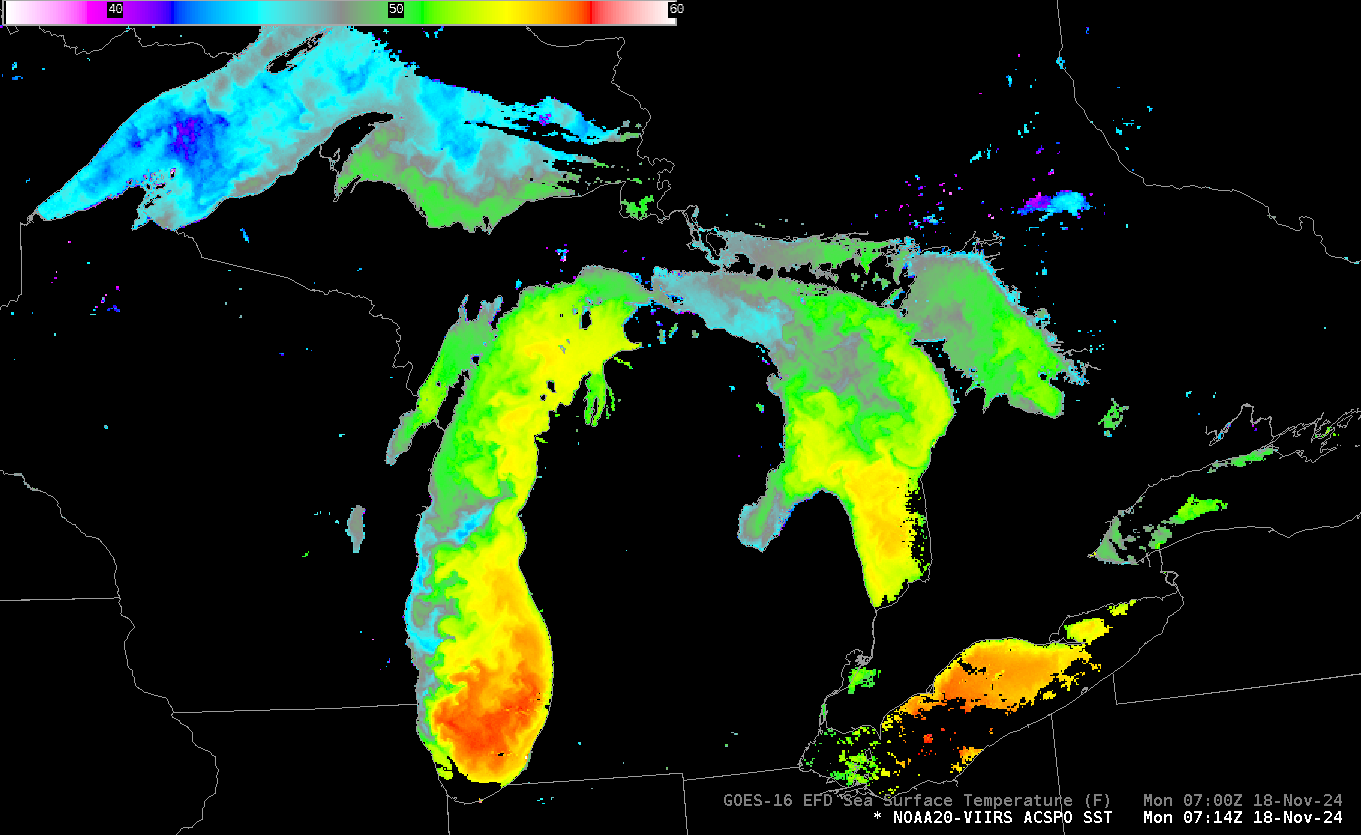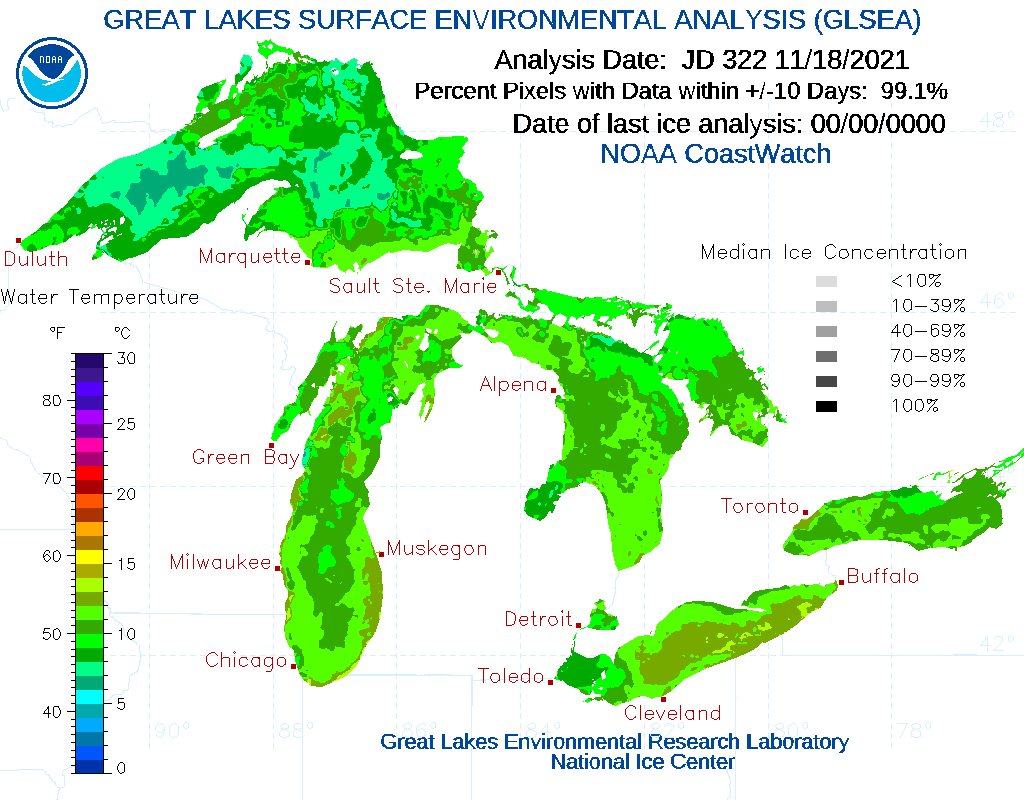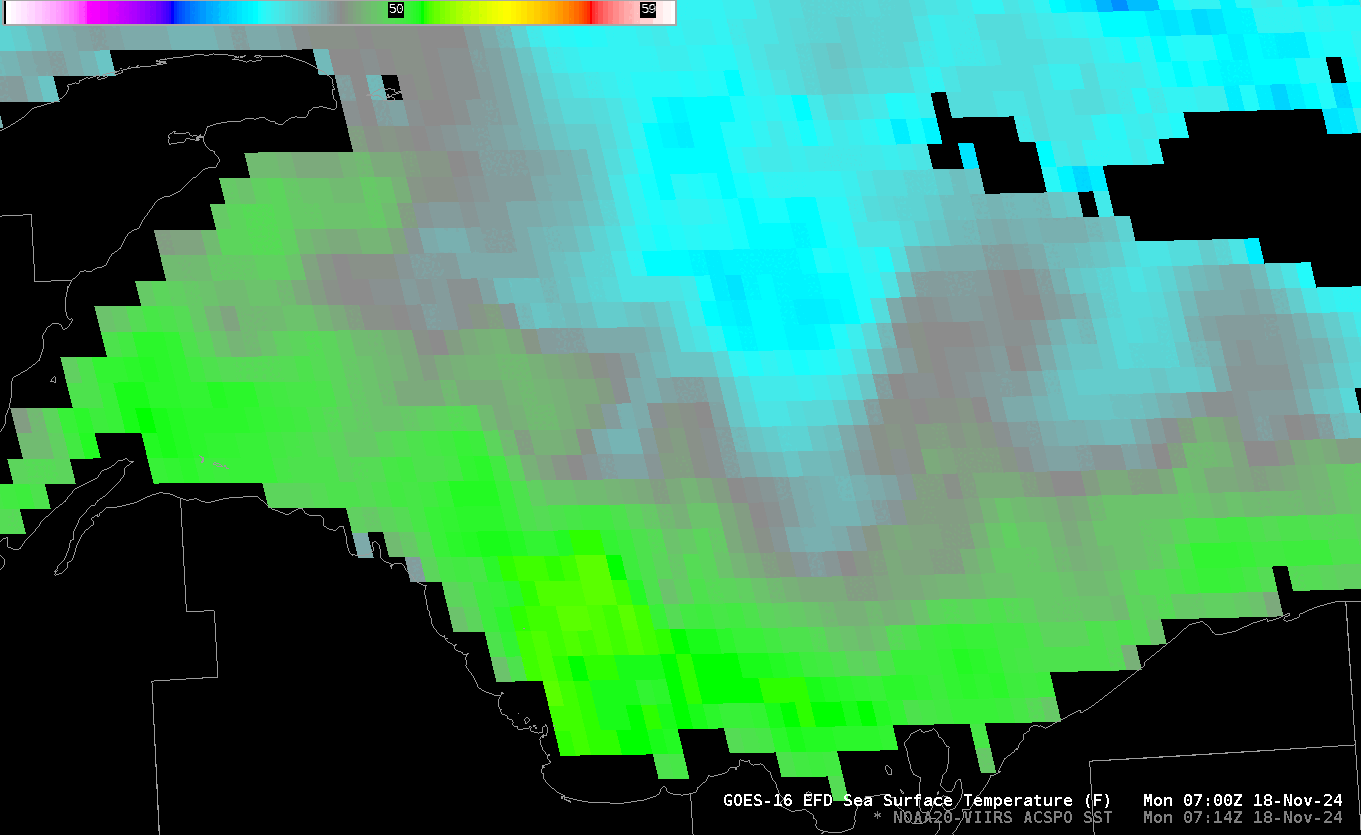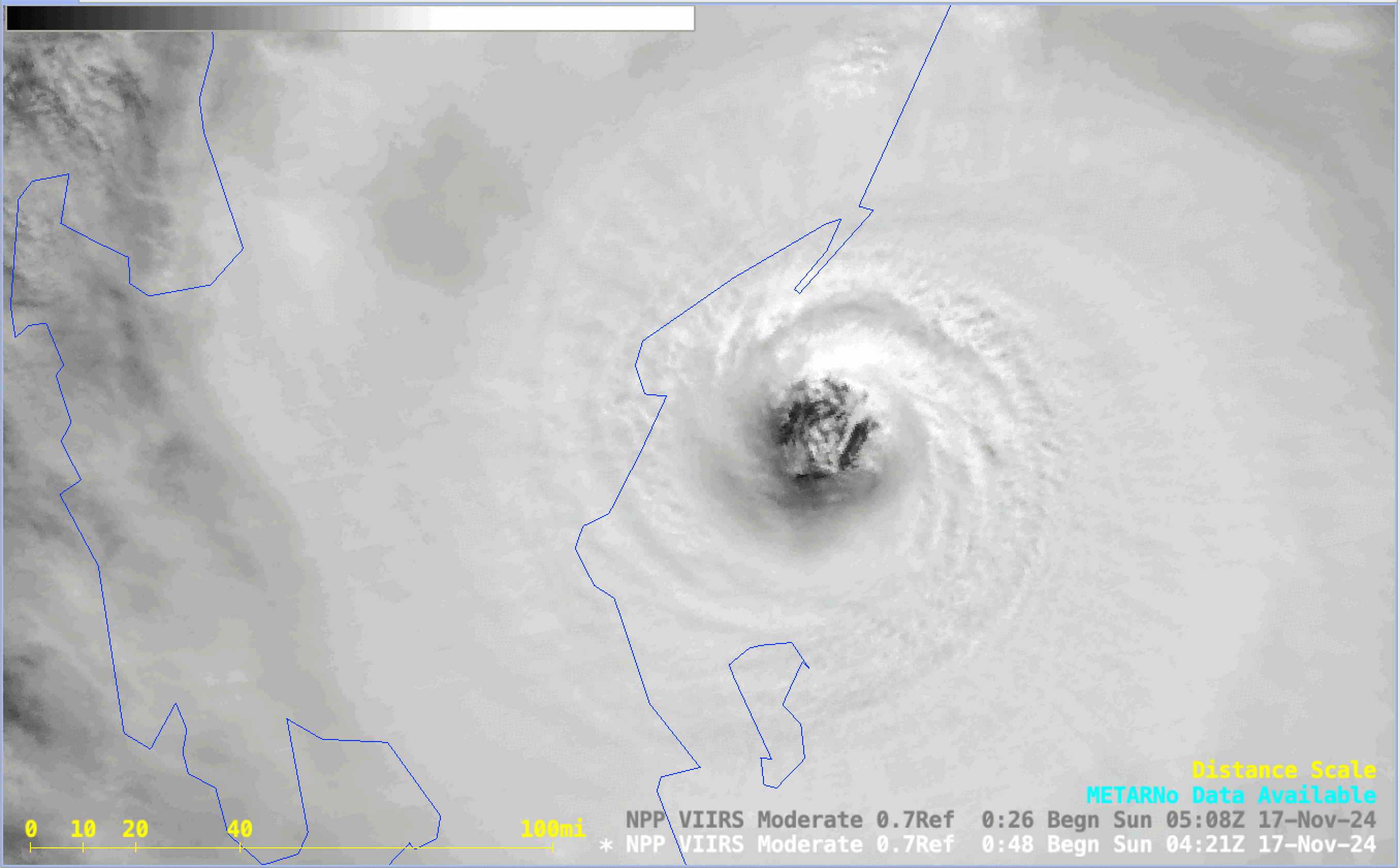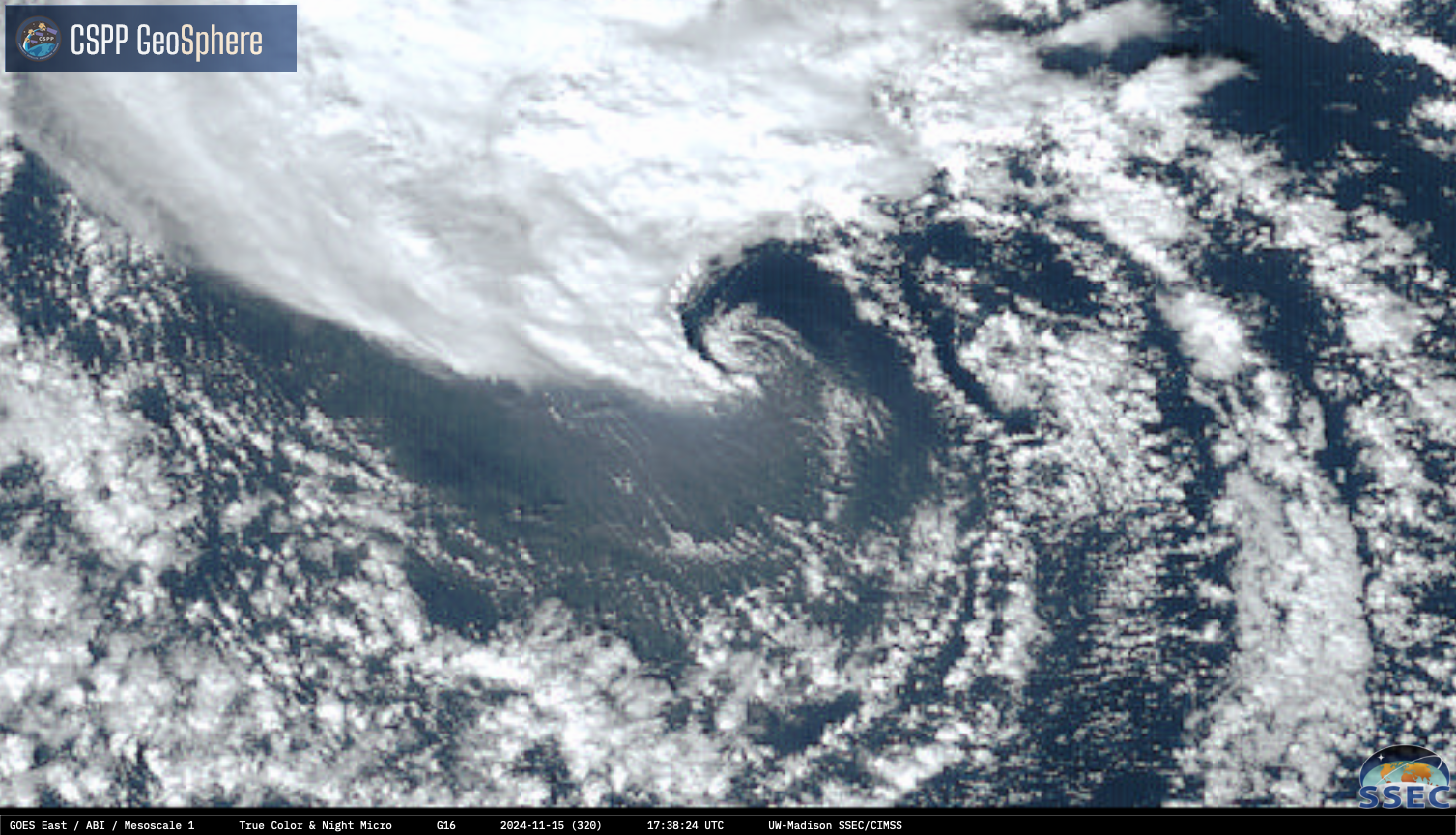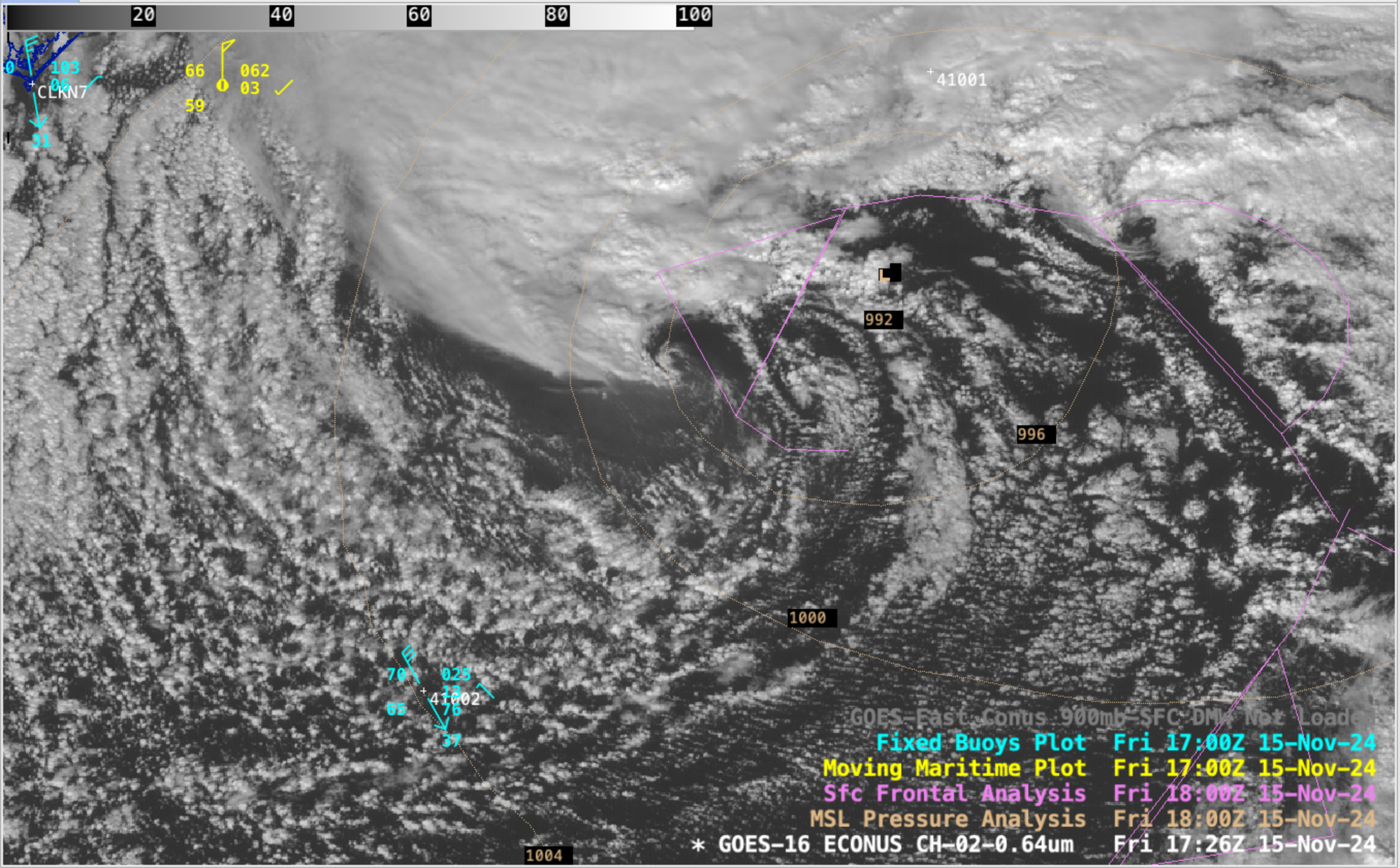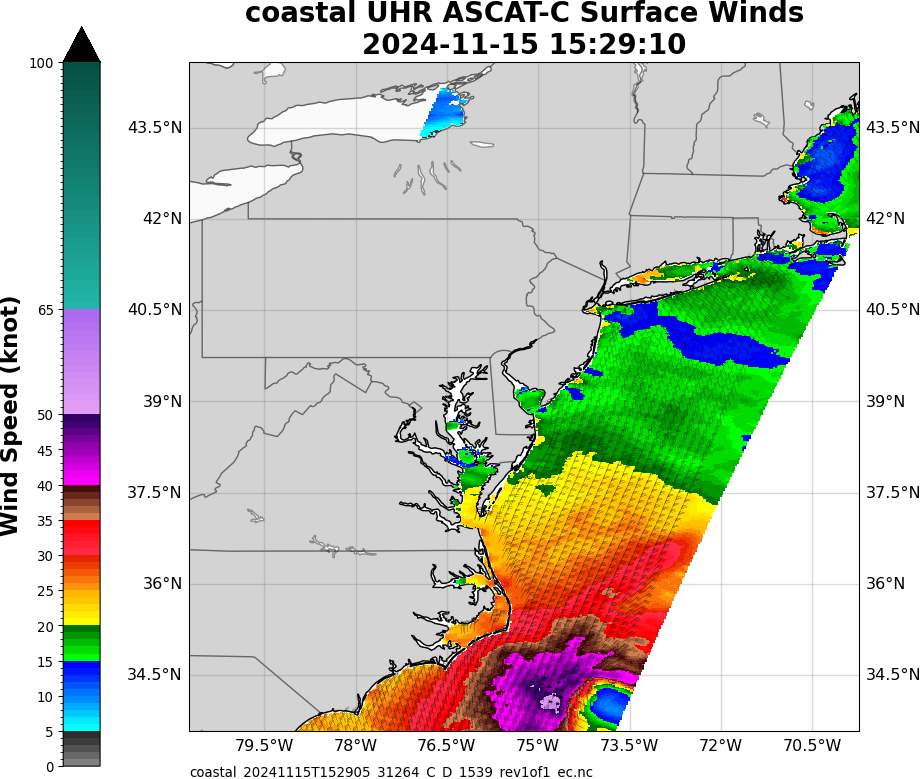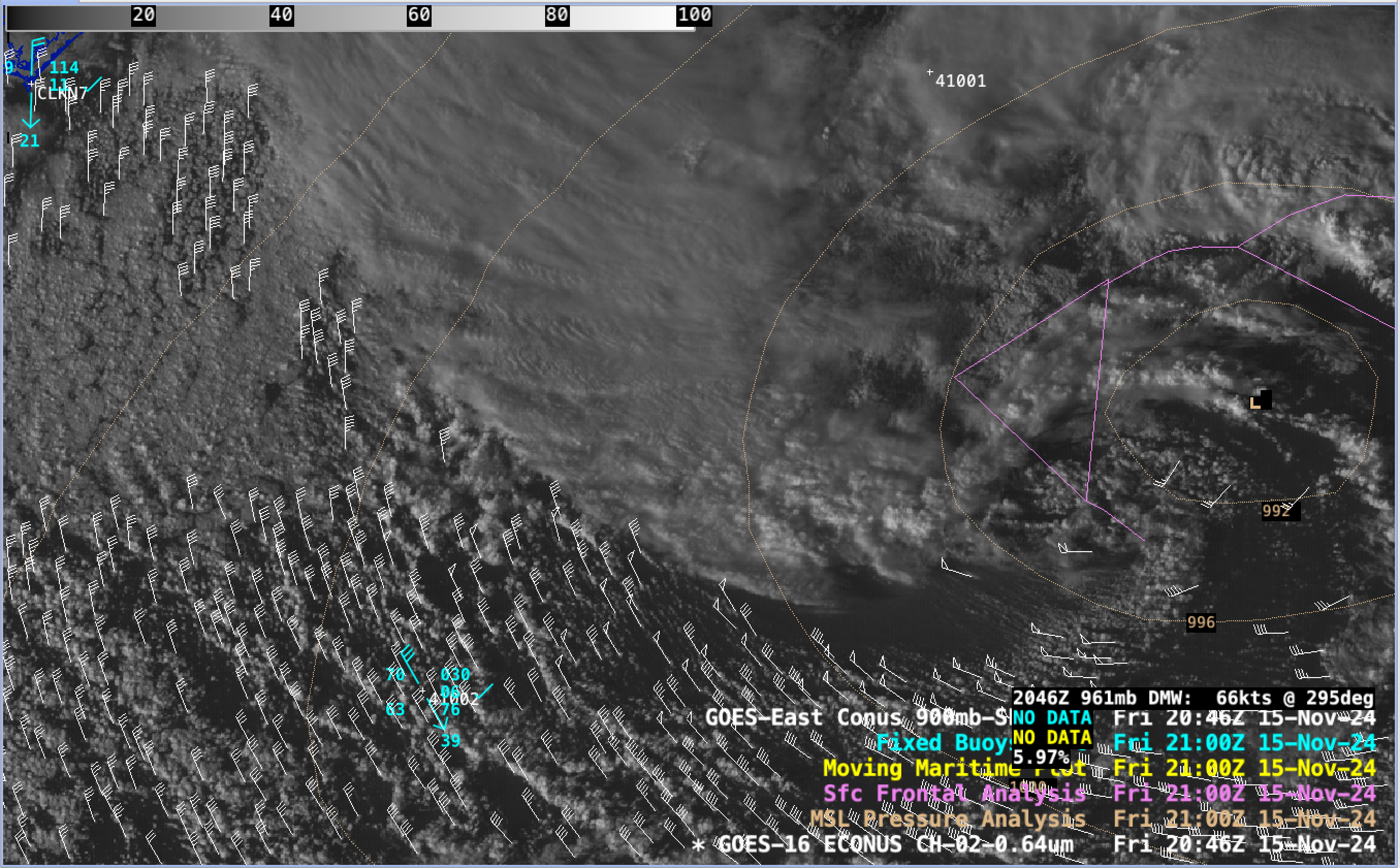
A display of all 16 ABI spectral bands from GOES-16 (GOES-East) showed that a hot thermal signature of the SpaceX Starship Falcon Heavy rocket booster was apparent in Near-Infrared & Infrared bands 04-16 at 2101 UTC during its Test Flight 6 on 19th November 2024. In addition, the rocket exhaust condensation cloud was... Read More
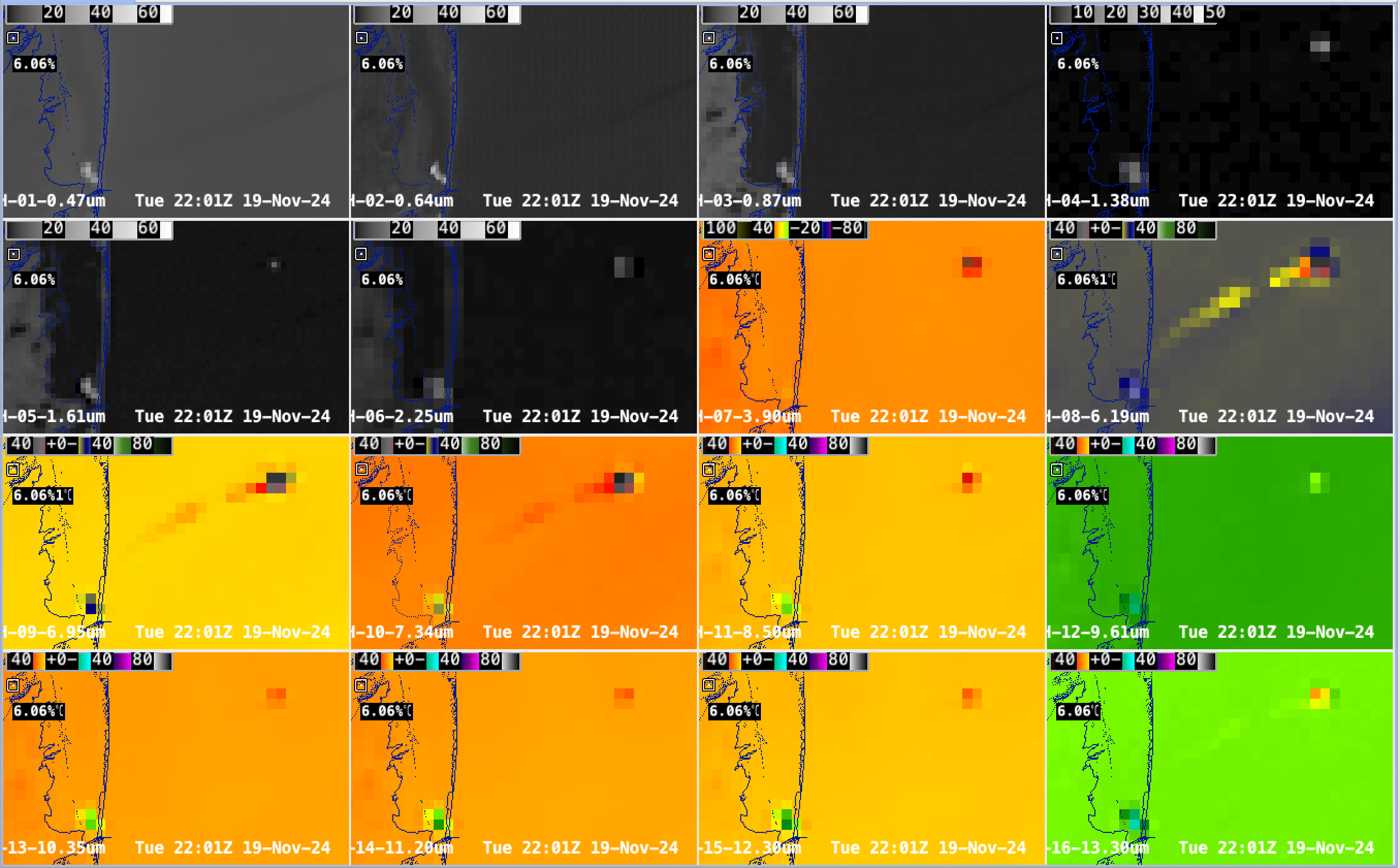
Multi-panel display of all 16 ABI spectral bands from GOES-16, from 2056-2111 UTC on 19th November [click to play animated GIF | MP4]
A display of all 16
ABI spectral bands from GOES-16
(GOES-East) showed that a hot thermal signature of the SpaceX Starship Falcon Heavy rocket booster was apparent in Near-Infrared & Infrared bands 04-16 at
2101 UTC during its
Test Flight 6 on 19th November 2024. In addition, the rocket exhaust condensation cloud was seen in all 16 spectral bands, as it began to drift northeast away from the Starbase launch site along the south coast of Texas..
10-minute Full Disk scan True Color RGB images (source) of the rocket exhaust condensation cloud as viewed from both GOES-18 (GOES-West) and GOES-16 are shown below (the images are displayed in the native projection of each satellite). Since the launch was late in the afternoon, the higher-altitude portions of the condensation cloud cast long shadows onto the water surface off the Texas coast.

True Color RGB images from GOES-18 (left) and GOES-16 (right), from 2150-2300 UTC on 19th November [click to play animated GIF | MP4]
A plot of rawinsonde data from Brownsville, Texas
(below) depicted speed and directional wind shear at high altitudes, which acted to distort the shape of the exhaust condensation cloud.
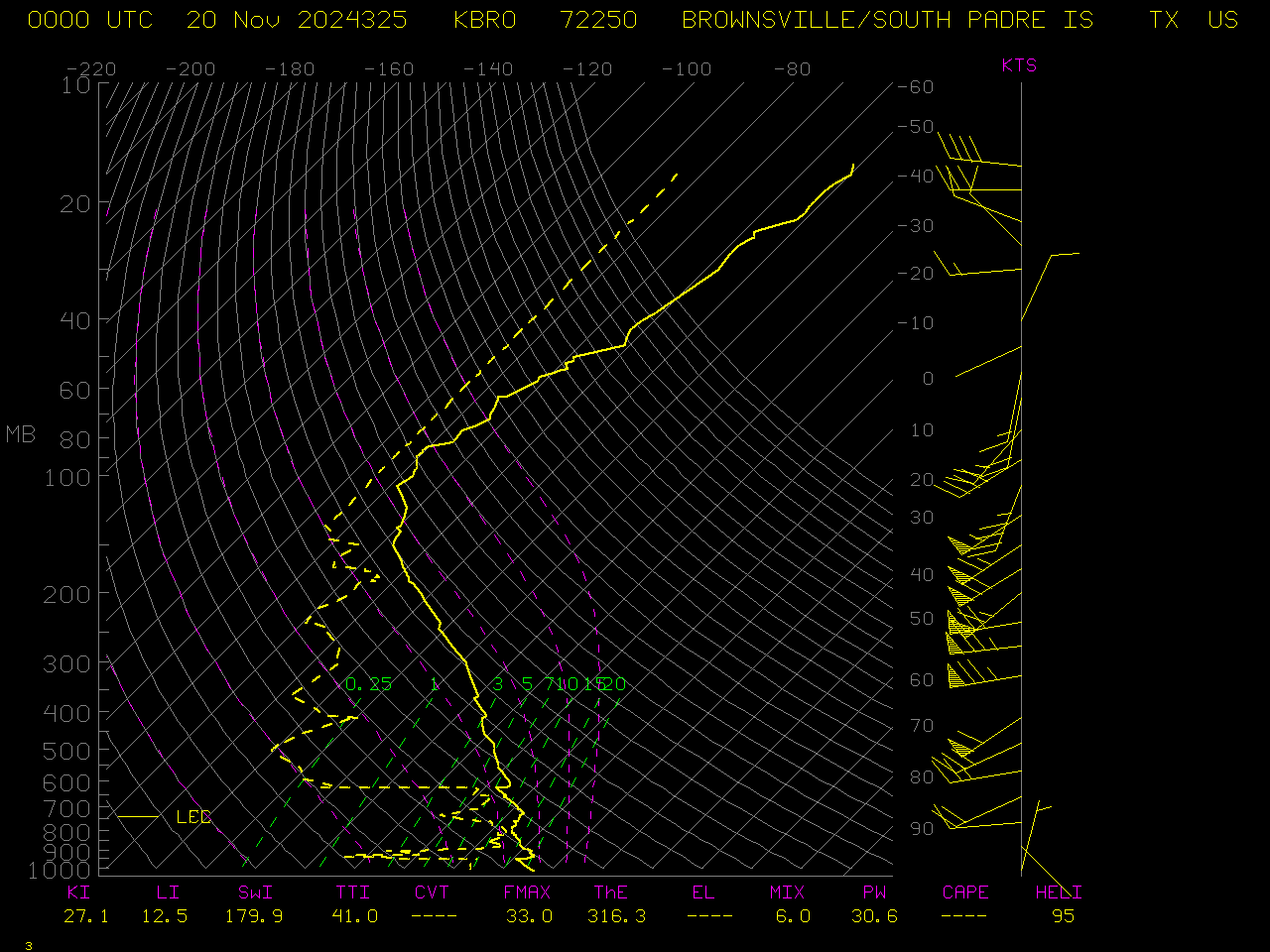
Plot of rawinsonde data from Brownsville, Texas at 0000 UTC on 20th November [click to enlarge]
Another comparison of 10-minute Full Disk scan True Color RGB images — created using
Geo2Grid — showed the rocket exhaust condensation plume as viewed from GOES-18, GOES-19 (Preliminary/Non-operational) and GOES-16. In this example, the images from all 3 satellites were remapped to a common projection.

True Color RGB images from GOES-18 (left), GOES-19 (center) and GOES-16 (right), from 2150-2300 UTC on 19th November [click to play animated GIF | MP4]
5-minute CONUS sector GOES-19 (Preliminary/Non-operational) True Color RGB images
(below) provided another view of the rocket condensation plume at a higher temporal resolution.

GOES-19 True Color RGB images, from 2141-2301 UTC on 19th November (courtesy Tim Schmit, NOAA/NESDIS/STAR) [click to play animated GIF | MP4]
View only this post
Read Less








